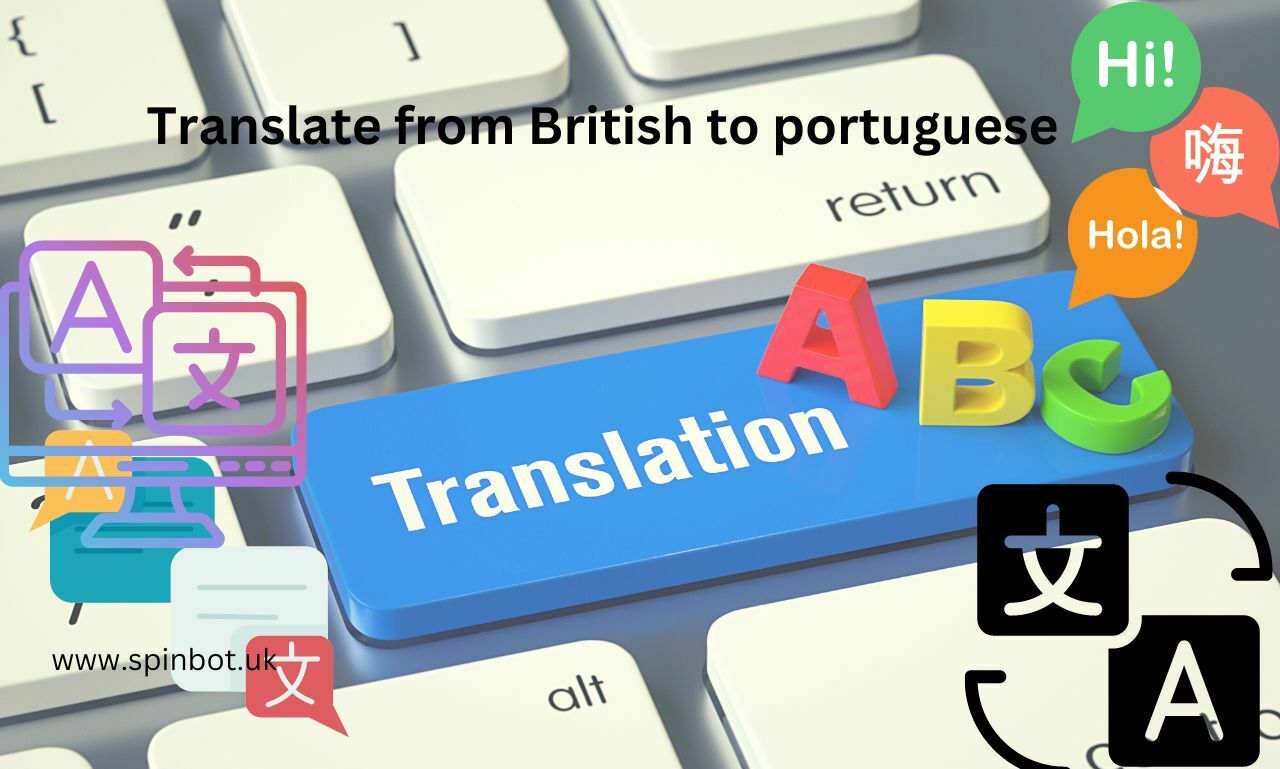
In today’s globalized world, it’s becoming increasingly important to be able to communicate effectively across different languages. Whether you’re translating business documents, legal contracts, or simply trying to communicate with someone in another country, being able to translate accurately and efficiently is crucial. One common translation need is to translate from British English to Portuguese.
Portuguese is the official language of Portugal and is also widely spoken in Brazil, Angola, Mozambique, and other countries. By translating from British English to Portuguese, you can communicate effectively with Portuguese-speaking audiences and expand your reach in these regions. In this article, we’ll discuss how to translate from British English to Portuguese online, with tips for accuracy and SEO optimization.
Find the best English to Portuguese translator online:
Online translation tools have made it easier than ever to communicate across different languages. Whether you’re translating business documents or simply trying to communicate with someone in another country, online translators
Google Translate:
Google Translate is one of the most popular online translators and can translate text, speech, images, and websites from English to Portuguese. It uses machine learning algorithms to provide accurate translations, and the user interface is simple and easy to use.
SDL FreeTranslation:
SDL FreeTranslation is a free online translator that can translate text, web pages, and documents from English to Portuguese. It provides instant translations and also offers professional translation services for a fee. The user interface is user-friendly and easy to navigate.
Babylon:
Babylon is an online translator that offers translations from English to Portuguese and over 70 other languages. It can translate text, web pages, and documents, and also provides additional features such as a dictionary and thesaurus. The user interface is intuitive and easy to use.
Reverso:
Reverso is an online translator that offers translations from English to Portuguese and several other languages. It provides instant translations for text, web pages, and documents, and also offers additional features such as a dictionary and grammar checker. The user interface is sleek and modern.
DeepL:
DeepL is an online translator that uses artificial intelligence to provide accurate translations from English to Portuguese and several other languages. It can translate text, web pages, and documents, and also offers additional features such as a dictionary and thesaurus. The user interface is simple and easy to use.
See also: How to Change Capital Letters to Lowercase in Word
When it comes to translating from British English to Portuguese, there are several online tools and resources available that can help you achieve accurate results. Whether you are translating a document, website content, or even a casual conversation, the following steps will guide you through the process of translating from British English to Portuguese online.
Step 1: Identify the Right Online Translation Tool
There are many online translation tools available, but not all of them are created equal. Some of the most popular translation tools include Google Translate, DeepL, and Bing Translator. However, for translating from British English to Portuguese, it’s best to choose a tool that specializes in the language pair, such as Reverso Translate or SDL FreeTranslation. These tools have a more comprehensive dictionary and provide more accurate results.
Step 2: Choose the Right Type of Translation
When translating from British English to Portuguese, there are two types of translation that you can choose from – machine translation and human translation.
Machine Translation: This type of translation is done using software and is the quickest and cheapest option. However, it may not always provide accurate results, especially when it comes to more complex texts.
Human Translation: This type of translation is done by a professional translator and is more accurate, but it can be expensive and time-consuming.
Depending on your needs, you can choose the type of translation that is best for you.
See also: Use of Existing Information to write Unique Articles?
Step 3: Copy and Paste the Text
Once you have identified the right online translation tool and chosen the type of translation you need, the next step is to copy and paste the text you want to translate into the translation tool. Be sure to proofread the text to make sure it is accurate and complete.
Step 4: Choose the Translation Direction
When using an online translation tool, you will need to choose the translation direction – from British English to Portuguese. This is usually done by selecting the languages from a drop-down menu or by using a toggle button.
Step 5: Translate the Text
Once you have selected the right translation direction, you can start the translation process. The translation tool will usually display the translated text in real time, and you can check the accuracy of the translation as you go along.
Step 6: Check the Accuracy of the Translation
Even though the translation tool will provide you with a translation, it’s important to check the accuracy of the translation yourself. This is especially important if you are translating a document that needs to be submitted to a client or a government agency. To check the accuracy of the translation, you can:
- Compare the original text with the translated text to make sure the meaning has been retained.
- Use an online dictionary to check the meanings of specific words and phrases.
- Ask a native Portuguese speaker to review the translation for accuracy.
Step 7: Edit and Revise the Translation
Step 8: Save and Share the Translation
Once you are satisfied with the accuracy of the translation, you can save and share the translation with others. You can download the translated document or copy and paste the translated text into an email, document, or website.
Tips for Translating from British English to Portuguese
- Use simple language: When translating from British English to Portuguese, it’s best to use simple language and avoid complex sentence structures or idioms.
- Use online dictionaries: Online dictionaries can help you find the meanings of specific words and phrases and ensure accuracy in your translation.
- Get a second opinion: If you are not confident in your translation skills, you can ask a native Portuguese speaker to review your translation for accuracy.
- Check for cultural differences: Portuguese culture may have different nuances and expressions that may not have direct translations in British English. It’s important to be aware of these cultural differences and adapt your translation accordingly.
- Proofread your translation: After completing the translation, make sure to proofread the text to ensure that it is error-free and accurately conveys the intended message.
- Use tables for specific terminology: If you need to translate specific terminology, such as medical or legal terms, you can create a table that lists the original term in British English and its corresponding translation in Portuguese. This can help ensure consistency and accuracy in your translation.
- Use bullet points for clarity: When translating instructions or procedures, using bullet points can help ensure clarity and make it easier for the reader to follow the steps.
Translating from British English to Portuguese can be done easily and accurately using online translation tools. By following the steps outlined above and taking into account cultural differences and SEO optimization, you can ensure that your translations are accurate and effective.
Remember to proofread your translations and get a second opinion if needed to ensure accuracy and clarity in your translation. With the right tools and techniques, translating from British English to Portuguese can be a breeze. Please give some feedback about this article if you have found some knowledge.

Rishi Sunak, experienced blogger & WordPress developer, excels in digital marketing & SEO. Delivers high-quality content at https://blog.spinbot.uk/, enhancing online visibility & earning potential.